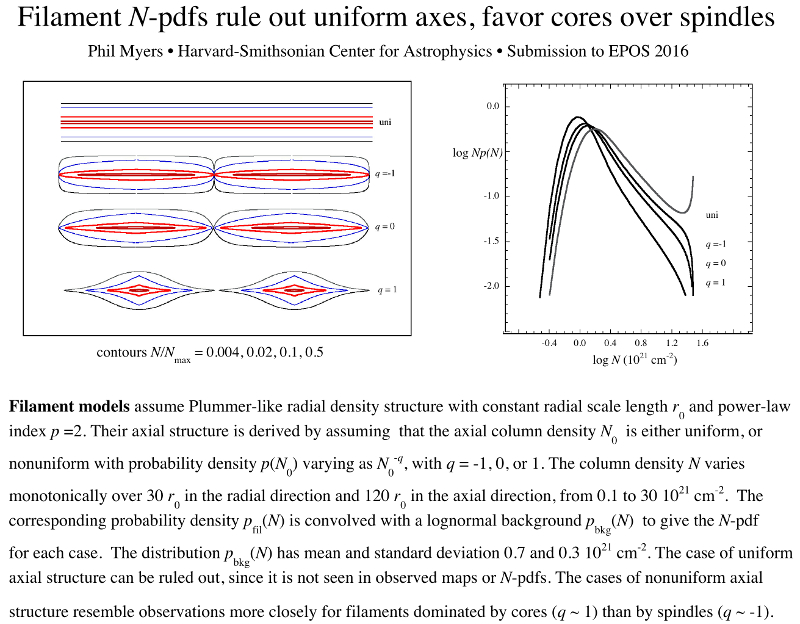| EPoS Contribution |
|
Lumpy filaments in a turbulent medium
Phil Myers CfA, Cambridge, US | |
| In star-forming molecular clouds, the distribution of column densities (N-pdf) is widely used as a global census of their star-forming potential. This talk interprets N-pdfs in terms of filaments, the main cloud component on scales 0.1-10 pc. The simplest model which matches observed filament properties and N-pdfs gives two results of interest. First, filaments must be radially concentrated in a spatially fluctuating background. This result supports the idea that supersonic turbulence generates filaments which condense and become self-gravitating, as seen in numerous simulations. Second, the typical filament must have significant variation of axial density - more than in a smooth filament with a few dense cores. Observed and simulated filaments also show significant peaks and valleys in their axial profiles, even when they lack well-defined cores. This result suggests that the axial structure of the typical filament may originate during its formation process, and not after Jeans fragmentation of an initially smooth filament in equilibrium. | |
 | |
| Caption: N-pdfs rule out uniform axes, favor cores over spindles | |
|
Key publication
Suggested Session: Filaments | |

